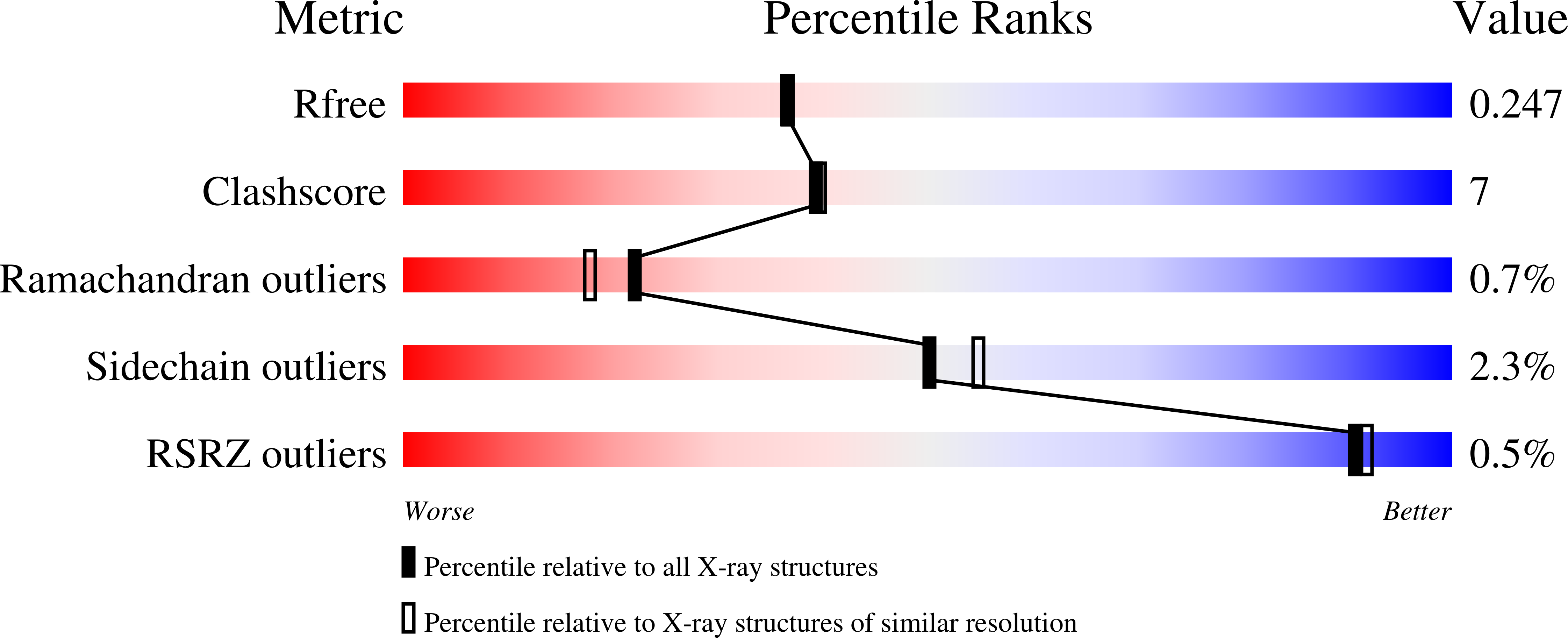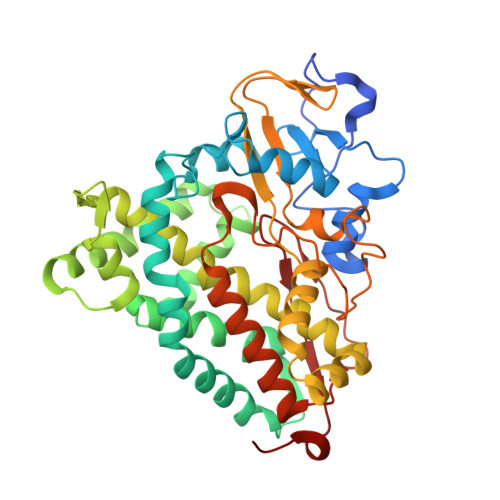Unexpected Differences between Two Closely Related Bacterial P450 Camphor Monooxygenases.
Murarka, V.C., Batabyal, D., Amaya, J.A., Sevrioukova, I.F., Poulos, T.L.(2020) Biochemistry 59: 2743-2750
- PubMed: 32551522
- DOI: https://doi.org/10.1021/acs.biochem.0c00366
- Primary Citation of Related Structures:
6WPL - PubMed Abstract:
The bacterial cytochrome P450cam catalyzes the oxidation of camphor to 5- exo -hydroxycamphor as the first step in the oxidative assimilation of camphor as a carbon/energy source. CYP101D1 is another bacterial P450 that catalyzes the same reaction. A third P450 (P450tcu) has recently been discovered that has ≈86% sequence identity to P450cam as well as very similar enzymatic properties. P450tcu, however, exhibits three unusual features not found in P450cam. First, we observe product in at least two orientations in the X-ray structure that indicates that, unlike the case for P450cam, X-ray-generated reducing equivalents can drive substrate hydroxylation in crystallo . We postulate, on the basis of molecular dynamics simulations, that greater flexibility in P450tcu enables easier access of protons to the active site and, together with X-ray driven reduction, results in O 2 activation and substrate hydroxylation. Second, the characteristic low-spin to high-spin transition when camphor binds occurs immediately with P450cam but is very slow in P450tcu. Third, isothermal titration calorimetry shows that in P450cam substrate binding is entropically driven with a Δ H of >0 while in P450tcu with a Δ H of <0 with a more modest change in - T Δ S . These results indicate that despite nearly identical structures and enzymatic properties, these two P450s exhibit quite different properties most likely related to differences in conformational dynamics.
Organizational Affiliation:
Departments of Molecular Biology and Biochemistry, Pharmaceutical Sciences, and Chemistry, University of California, Irvine, California 92697-3900, United States.

















